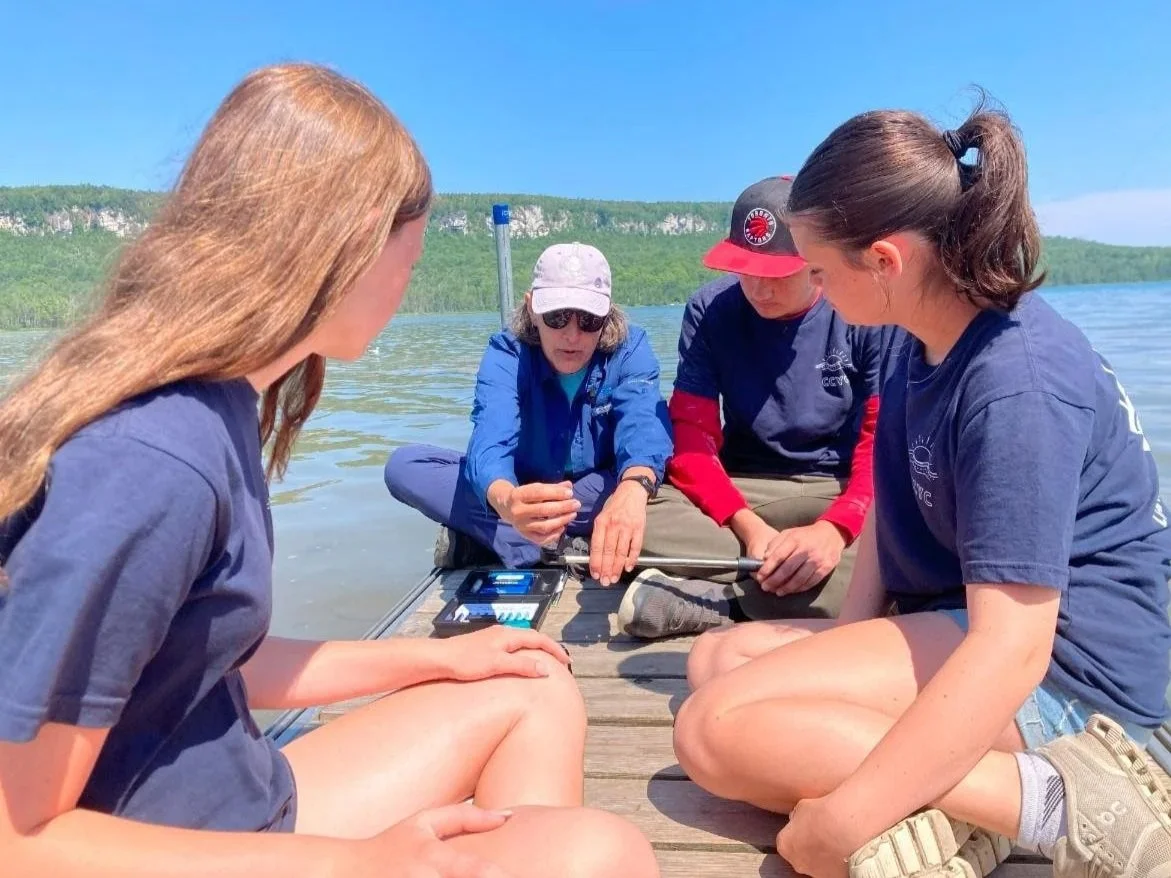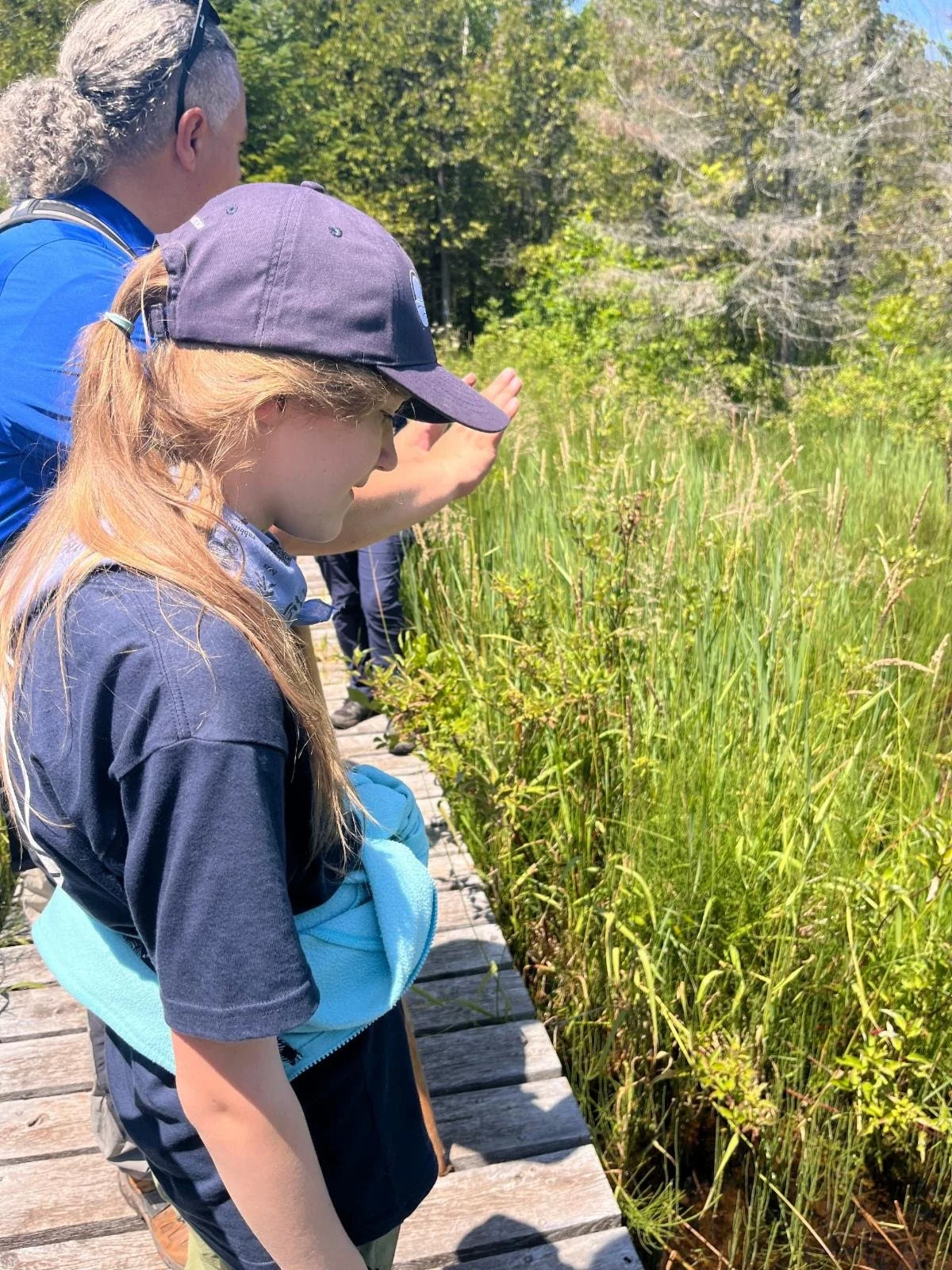Youth Volunteers Tackle Microplastics, Habitat Restoration Along Huron Coast
The shores of Kincardine, Ontario are cleaner and more resilient thanks to the efforts of the Coastal Youth Conservation Corps (CCYC) this summer.
Organized by the Lake Huron Coastal Centre, CCYC offers youth aged 14-18 hands-on experience in coastal ecosystem management, shoreline dynamics and restoration work. Participants gain practical field experience while making a direct impact on their local coastal environment.
CCYC youth observe a wetland habitat from a boardwalk.
During a week of volunteer stewardship activities along the shore of Lake Huron in July, a dozen members of CCYC restored native vegetation and removed plastic litter along Station Beach to the south of Kincardine Pier.
The combination of transplanted grasses and plant plugs installed by CCYC with the help of Coastal Centre staff will act as a living fence, capturing windblown sand to enhance the existing dunes. The plants were installed in two clusters within the “no-swim zone,” an area of Station Beach prone to strong rip currents. These native plants will help stabilize the dunes and make the shoreline more resilient to wave erosion.
A handful of “nurdles” collected from the sands near Kincardine Pier.
Less obvious is how these youth collected thousands of nurdles—tiny beads used in plastics manufacturing—and other microplastics concentrated in the sand near the pier. While some conservation efforts may not be as visible as others, they are certainly important and valued. Litter collection leaves the shore in a healthier, more natural condition and reduces plastic ingestion by wildlife.
In Goderich, CCYC participants removed young invasive buckthorn shrubs along the Maitland Trail, and pulled invasive garlic mustard and Himalayan balsam from Sunset Park. Afterwards, they planted native grass and ninebark to further restore the area. They also conducted a shoreline cleanup of Black’s Point, collecting plastic litter and numerous tires. While there, they found phragmites growing and were able to remove this fast-spreading invasive species before it could take over the shoreline.
CCYC is generously supported by Bruce Power, Enbridge, John Hindmarsh Environmental Trust Fund, Lions International of Goderich and McCall Foundation. Learn more about CCYC at lakehuron.ca/ccyc.



